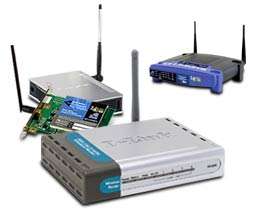Networking: Wiring the small office

Computer networks can dramatically cut costs and improve customer satisfaction, but only for major Fortune 500 and Forbes 400 companies, right? Perhaps that was the case last century, but not anymore. Experts tell United Press International's Networking that technologies are now providing the same benefits to small and medium-sized enterprises -- and that this may be part of what is behind the productivity-based economic boom in the United States today.
"Today's small and mid-size companies are taking a cue from these larger organizations," Joe Hewitt, an expert on small and medium-sized business networking at Dimension Data, a Hauppauge, N.Y.-based computer consultancy, told Networking, "and are leveraging the power of technology for business advantage."
This is happening throughout North America and Europe, not just in the United States. According to research by Cisco Systems, working in partnership with Momentum Research and the University of Pennsylvania's Wharton School of Business, as well as an English university, productivity was improved in Europe by three to seven times by the use of networking technologies. The partners are now studying the exact impact of networking on small to medium enterprise companies with fewer than 500 employees.
"Small and mid-size businesses are finding how important it is to establish a common network infrastructure," said Hewitt. "Networking increases productivity by making information centrally available to employees."
A small company in Greensboro, N.C., recently completed a networking project that drastically cut internal administration time on one particular project from 10 hours per week to one hour. The company, Carson-Dellosa Publishing Co., an educational publisher, previously had a process for reviewing spreadsheets that forced employees to constantly print the documents to review and update them. The new platform, installed by a consulting company called Eastridge Technology Inc. based in Winston-Salem, N.C., allows the employees to update the spreadsheets over the network and review others' work product over the net as well, the company told Networking.
Another small firm, Chicago-based Feldo, upgraded its networking technology and credits the software and hardware with helping grow the company from $5 million in sales in 2000 to $60 million today.
In addition to conventional networks, small and medium-sized companies are eyeing so-called WAFS, or Wide Area File Services, experts say. This technology helps employees working remotely -- perhaps from home, or at a hotel room while on the road -- access files on the computer network quickly.
John Sheaffer, chief executive officer of Sysix, a value-added reseller, told Networking that he foresees small and medium-sized businesses embracing technology more than ever in the coming years.
Another expert, Ed Gogol, director of enterprise systems at Solarcom, told Networking that small and medium enterprises are also looking to integrate software and hardware from networking into their storage systems, enabling them to preserve corporate data for years.
"Small and medium-sized businesses are recognizing the benefits of automation," said Hewitt.
Interestingly, though the smaller concerns may not be publicly traded, they are still feeling the impact of government regulations, like Sarbanes-Oxley and other laws, designed to prevent corporate fraud by unscrupulous executives. That's leading to the adoption of new, innovative technologies at the tinier firms -- which in the past may have waited years before purchasing the items. Today, even the small office is wired.
"Regulatory and financial concerns are driving branch office server consolidation and centralization," said Joe Skorupa, research director at Gartner Inc., a research consultancy. "To stay competitive and compliant, many companies are removing branch office servers and are replacing them with 'Branch Office Box' appliances -- a hybrid of server and WAN optimization controller -- that represent the convergence of networking, storage and servers. Leading BOB vendors are beginning to emerge and deliver single solutions that offer application performance and availability, caching, compression and wide area file services, as well as 'invisible' services that include DNS/DHCP, domain controller and print capabilities."
Copyright 2006 by United Press International


















